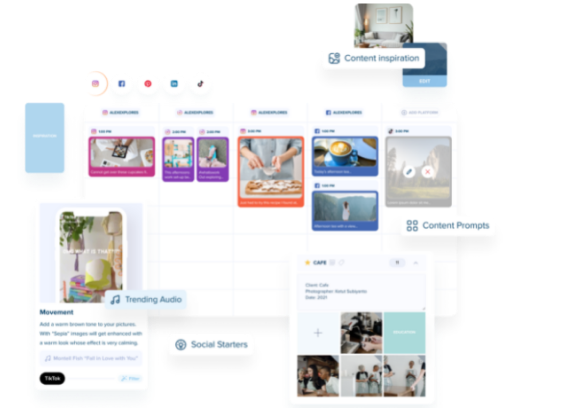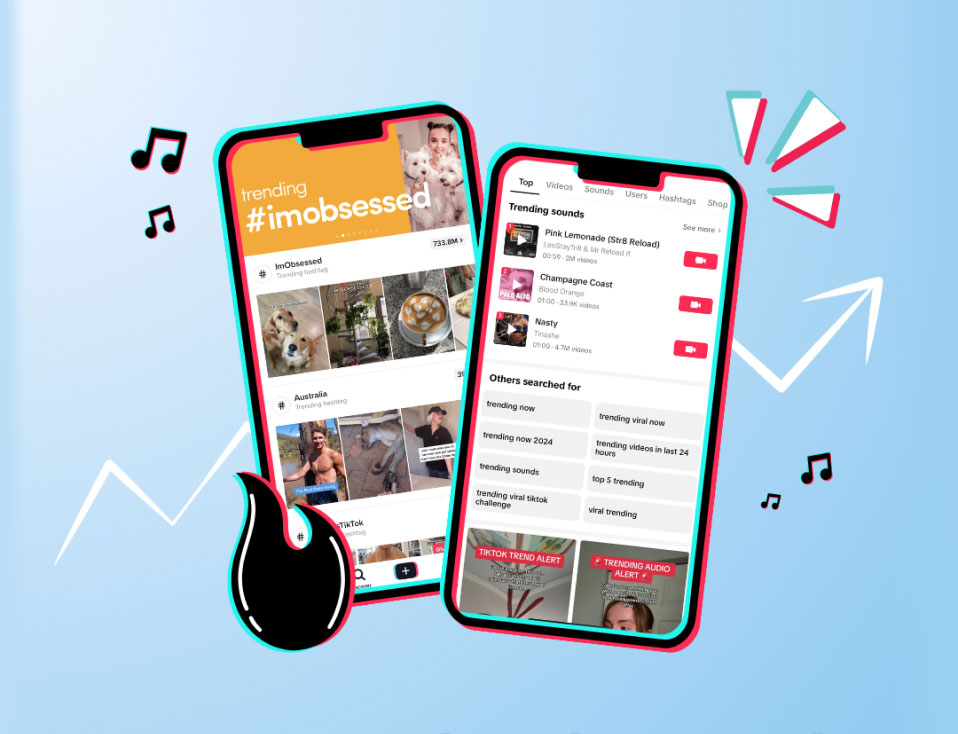People naturally seek connection and community, whether it’s dissecting Taylor Swift lyrics and trading friendship bracelets at her concerts, joining Facebook Groups to fangirl over niche topics like Anne Rice’s books, or seeking advice on Pinterest growth strategies.
It’s all about finding that acknowledgement and acceptance in others.
In digital marketing, community management goes beyond selling products or services; it’s creating a network of engaged individuals who feel valued and connected to your brand. You show your followers you genuinely care by consistently delivering value and generating positive brand awareness.
That connection creates life-long fans who feel a deeper connection to your business.
In this guide, we’ll share how to build an effective community management strategy from the ground up with actionable tips and real-world examples.
What is Community Management on Social Media?
Community management on social media is the strategic process of building, growing, and nurturing your brand’s community. It aims to create a loyal and active group of true fans through meaningful interactions and encouraging user participation.
Your community management strategy outlines how your brand will engage with its audience, build relationships, and create a sense of belonging. It’ll include your goals, engagement tactics, content planning, and methods for measuring and analysing success.
In tangible terms, community management on social media involves:
- Responding to user engagements, like DMs and comments
- Actively reaching out to new, relevant users and potential customers on social media
- Managing tagged posts and engaging with user-generated content
- Having a plan in place to deal with criticisms or negative reviews on social meida
Why Community Management Is Important
Community management is about making people utterly, totally, head of heels obsessed with your brand. It’s unleashing your inner Serena Van Der Woodsen and turning those social media lurkers into raving brand advocates.
It enables your business to:
- Generate and improve brand awareness
- Provide valuable customer satisfaction and inspire loyalty
- Quickly respond to positive and negative feedback from your community
- Gather customer insights to fuel your product development and marketing strategies
- Build a network of brand advocates who will promote your brand with zero marketing budget
What’s The Difference Between Community Management and Social Media Management?
While social media management and a social media community manager seem the same on paper, distinct differences set them apart.
Social Media Management
Social media management focuses on increasing reach, growing a follower base, and converting followers into customers. The main activities social media managers perform are creating and scheduling posts, analysing metrics, and optimising the strategy to drive key metrics.
Community Management
Community management focuses on building relationships and creating deeper, more meaningful interactions on and off social media. The main activities of a community manager involve facilitating discussions in comments and DMs, providing value to community members, running social media groups and cultivating brand advocates.
How to Build a Community Management Strategy
Managing a community isn’t always easy, but with the right strategy, you can tackle any obstacle.
Step 1: Set Your Goals and Success Metrics
Setting clear goals is the first step in building a successful community management strategy. Start by defining what you want to achieve with your community efforts.
Not sure where to start? Here are some common goals to guide you in the right direction:
- Increase community engagement through comments, likes and shares.
- Boost brand awareness within your target audience.
- Improve customer support with timely and helpful community support.
- Build loyal brand ambassadors who will promote your business.
- Gather feedback from community insights to improve your products or services.
Once your goals are set, identify the success metrics that will help you track progress. These metrics should align with your overall objectives and provide clear indicators of your community’s health.
Here are some community management metrics you can track:
- Total number of followers joining your community every week, month, quarter and year.
- Likes, shares, mentions, and saves on your posts.
- Number of attendees for Instagram Lives or webinars.
- Total number of followers and interactions inside your Instagram Channel.
- Number of sign-ups, sales and conversions from your community engagement channels.
Step 2: Plan Your Content
Planning your content is the not-so-secret ingredient for keeping your community happy and well-fed. Without a consistent posting schedule and content your audience wants to see, achieving your community management goals will stay a pipe dream.
Here are some actionable strategies to help you plan and create content that will resonate with your online communities:
Understand Your Audience
Start by getting to know your community. Understand their interests, pain points, and what motivates them. Use surveys, polls, and direct interactions to gather insights.
Once you have a crystal-clear idea of WHO you’re creating content for, it will guide your content creation and make meeting their needs and expectations much easier.
Create a Content Calendar and Stick to Your Posting Schedule
Still posting when you feel like it?
If you’re not seeing the growth you want, it’s time to ditch that strategy and start using a content calendar.
Sticking to a posting schedule, whether that’s every day or three times per week, keeps your community engaged and creates strong brand recall.
Sign up for a free account with Plann, and you’ll gain access to a free social media content calendar. However, it does way more than help you visually organise your content. It comes with an AI caption writer, strategy planner, and cross-posting between your other social media platforms.
Create Value-Driven Content
Your community content is not a hard sell.
I repeat.
It’s not an advertisement for the features and benefits of your products and services.
It’s for your community. It’s to build relationships.
So ditch the five-minute elevator pitch and focus on creating content that adds value to your community. Offer solutions to their problems, share industry insights, and provide tips that can help them in their personal or professional lives.
For example, create how-to guides, tutorials and educational content that addresses the needs of your online communities.
The Productivity Method, a planner that aims to stop procrastination, regularly creates helpful content around time management and other problems busy professionals experience (cue: back pain from sitting hunched over at your desk job 8 hours every day).
View this post on Instagram
View this post on Instagram
Encourage User-Generated Content
Invite your community members to share their experiences, stories, and content related to your brand. Recognize and reward their contributions by featuring them on your social media channels and create a space where your followers can connect with others who share their values and passions.
GoPro is a brand that knows a thing or two about using user-generated content (UGC) to its full advantage. The brand encourages its followers to share their live-action footage using the hashtag #GoPro and incentivizes participation with $100,000 up for grabs.
View this post on Instagram
Step 3: Engage With Your Community
Engaging with your community is vital to maintaining an active and loyal following. While there are tried-and-true engagement techniques, like responding to all your comments and messages to keep the conversations rolling, there are some more actionable strategies you can add to your community-building repertoire.
Use Interactive Content
Interactive content like polls, quizzes, and live Q&A sessions can boost engagement by encouraging participation. Ask for opinions on new products, seek feedback, and create fun, engaging content that involves your audience.
For example, Shreddy (a fitness app) hosts Instagram Q&A sessions when a new plan is launched and then saves it as a Highlight.
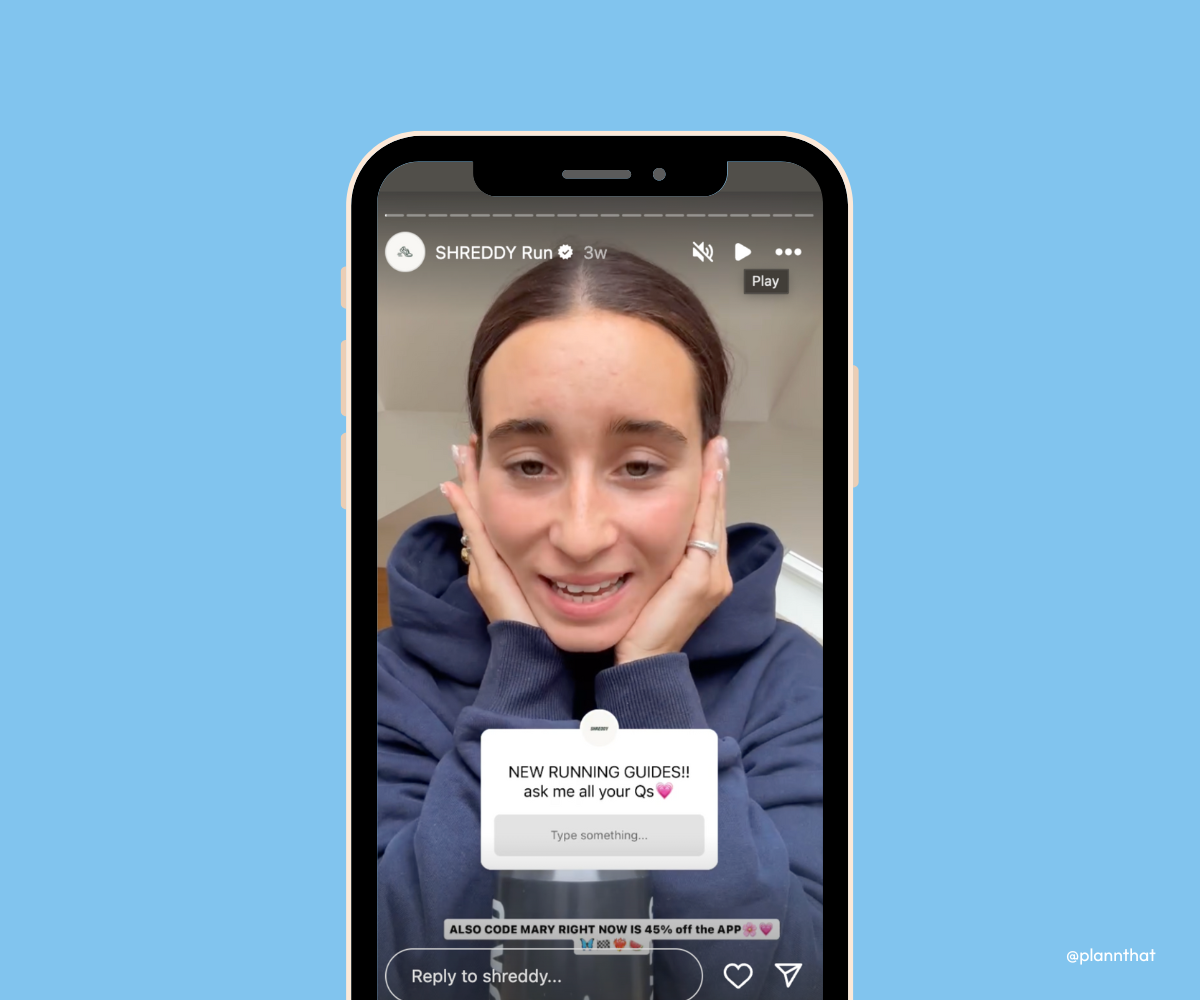
Create interactive content to boost your online community engagement
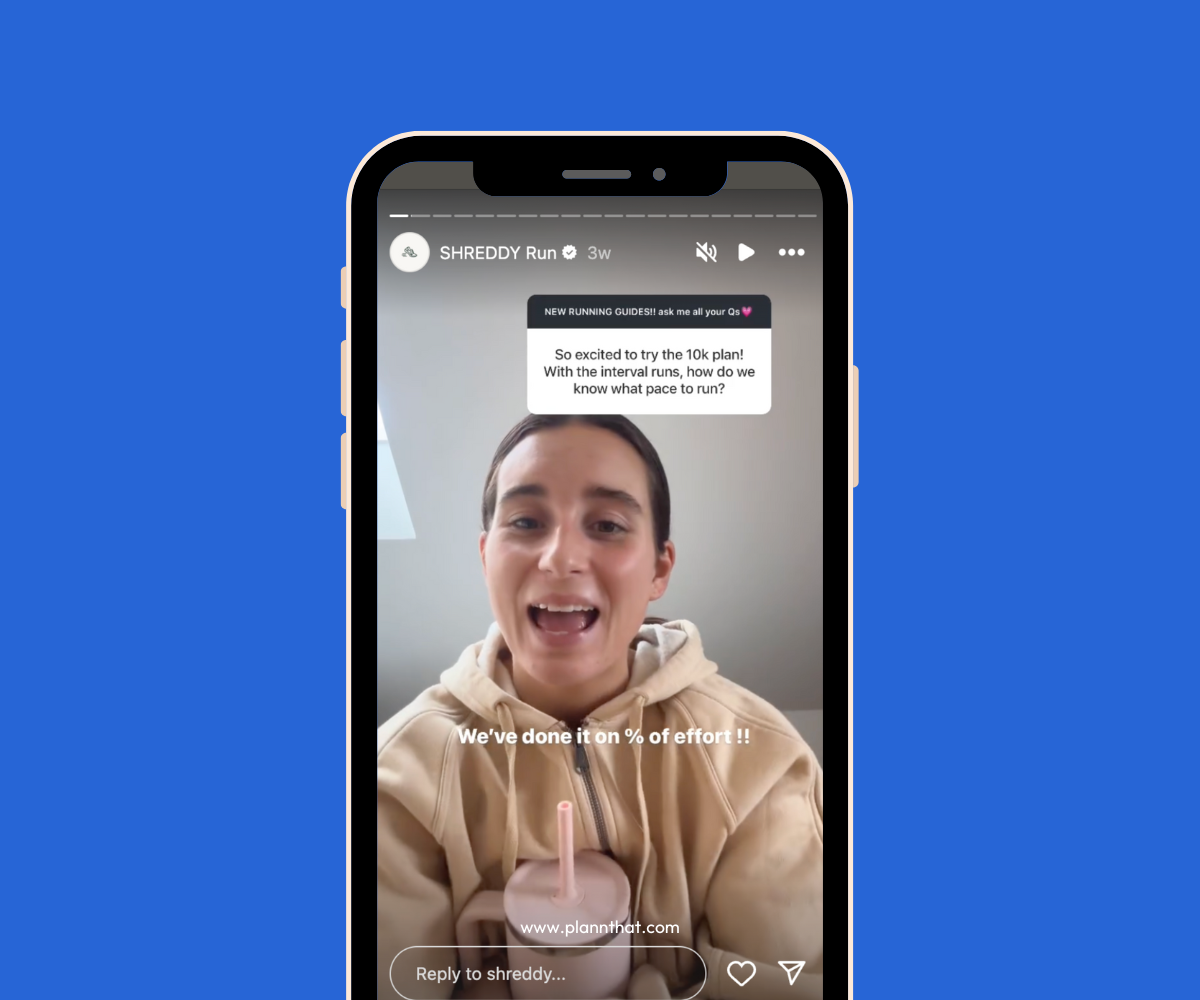
Q&A sessions are a powerful engagement strategy for social media communities
Host Community Events
Organize virtual events such as webinars, live streams, or community meet-ups to bring your audience together. These events offer a platform for real-time interaction and strengthen the sense of community.
Tala, an activewear brand in the UK, recently held its first run club event as part of its running-wear launch. It was a way for the community to meet some of the people behind the brand and for customers to meet other people who share their passion for running.
View this post on Instagram
Personalize Your Interactions and Follow Back
Personalize your interactions to make community members feel special and appreciated. Use their first names, reference past interactions, and tailor your responses to their queries.
Next, identify your brand advocates and follow them back. Like and comment on their posts to show appreciation for their support.
Always remember to maintain professional boundaries and make sure your interactions align with your brand values.
Lastly, Use a Community Management Tool
Growing communities across different social media platforms?
Getting back to every comment and message can feel daunting, and it’s possible you might miss some – unless you have the right tools.
Plann helps you manage all your comments and mentions from one handy dashboard. All you need to do is log into your account, navigate to “Reply,” and “you can quickly manage all replies (and even delete comments).
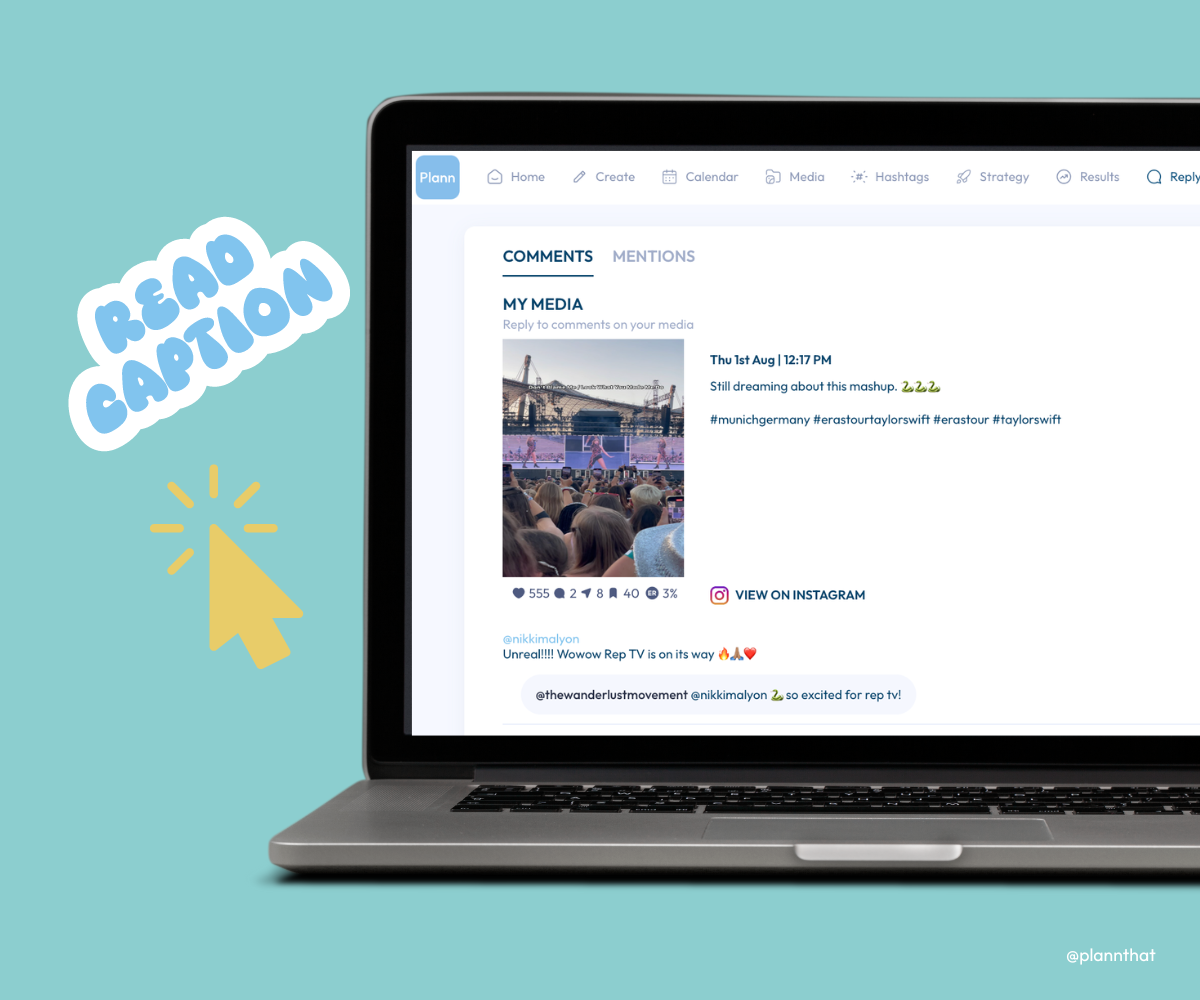
Reply to all your comments from one dashboard with a social media community tool
Step 4: Measure, Analyze, and Implement
The final step in your social media community management strategy is data-driven. If you want to understand how well your engagement tactics are working, it’s essential to track progress towards your community goals and correct course if you’re heading off in the wrong direction.
Here’s how to do it:
Analyze the Data
Review your metrics regularly to identify trends and patterns. Look for spikes in engagement, popular content types, and areas needing improvement. Use this data to understand what’s working and what isn’t.
Another thing you’ll want to keep an eye out for is community suggestions.
Is your audience asking for a particular product? Is there a problem that keeps coming up in the comments? That’s your sign to see if you can solve it!
Implement Improvements
Based on your analysis, adjust your social media community management strategy as needed. Experiment with different types of content, posting times, and engagement techniques.
The same goes for complaints. Is your audience asking for more diversity? If inclusivity is part of your brand, make a conscious decision to address that in your campaign.
Continuously iterate and refine your approach to better meet your community goals.
Schedule Your Community Content with Plann
Community management is how you build a brand with a loyal following that looks forward to your posts and product drops.
But to get there, it starts with implementing a strategy (like we have outlined above) and jumping onto the posting consistently bandwagon.
Sign up for a free 7-day trial of Plann today and get access to a treasure trove of tools that will make managing and growing your online communities easy peasy.

